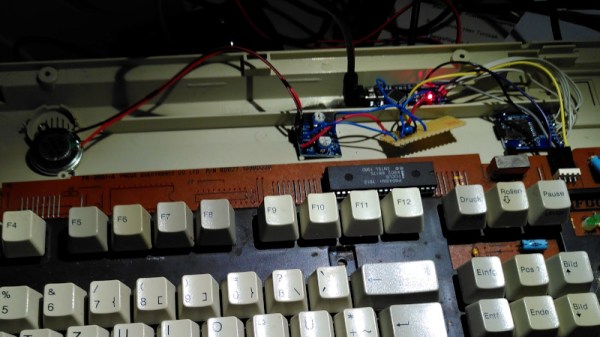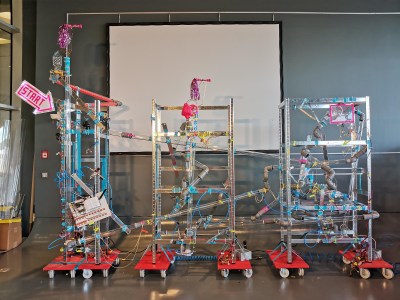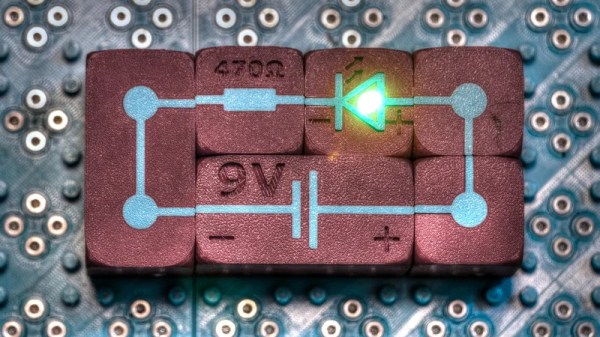Just as cats find sitting on a keyboard to be irresistible, so do children find pressing their keys. After throwing some ideas around with other parents, [Peter] came up with the idea of transforming an old AT keyboard into a learning toy by making each key press “speak” its corresponding letter.
The donor keyboard is a nondescript late-80s AT compatible PC. Before readers imagine that a sought-after mechanical ‘board is being defiled, these were manufactured in their millions back then with exactly the same lackluster actions as modern cheap input devices. This one had plenty of space inside for an Arduino Nano that emulates an AT keyboard host and plays WAV file samples from an SD card to one of its PWM outputs. An op-amp low pass filter cleans up the noise from this rudimentary DAC, and feeds a little speaker through an audio amplifier. The keyboard supports both male and female voices, as well as a piano.
Hours of juvenile fun will no doubt result, but we can’t help wondering whether this could become the bane of a parent’s life in the manner of so many other noise-producing toys. Meanwhile, [Peter]’s work has graced these pages in the past, most recently with an automatic cooker hood.



 While rocket boosts were out of scope for this build, [mrak_ripple] was pretty confident he could build a jumping, flipping RC car modelled after the Rocket League Octane vehicle. Initial experiments involved a custom 3D printed spring mechanism, but the results were underwhelming. Instead, in the true hacker spirit, a jumping mechanism was taken from an existing toy, and installed in the car instead. This was combined with a mechanism built out of a brushless motor with a flywheel added to generate a flipping moment in mid-air.
While rocket boosts were out of scope for this build, [mrak_ripple] was pretty confident he could build a jumping, flipping RC car modelled after the Rocket League Octane vehicle. Initial experiments involved a custom 3D printed spring mechanism, but the results were underwhelming. Instead, in the true hacker spirit, a jumping mechanism was taken from an existing toy, and installed in the car instead. This was combined with a mechanism built out of a brushless motor with a flywheel added to generate a flipping moment in mid-air.














